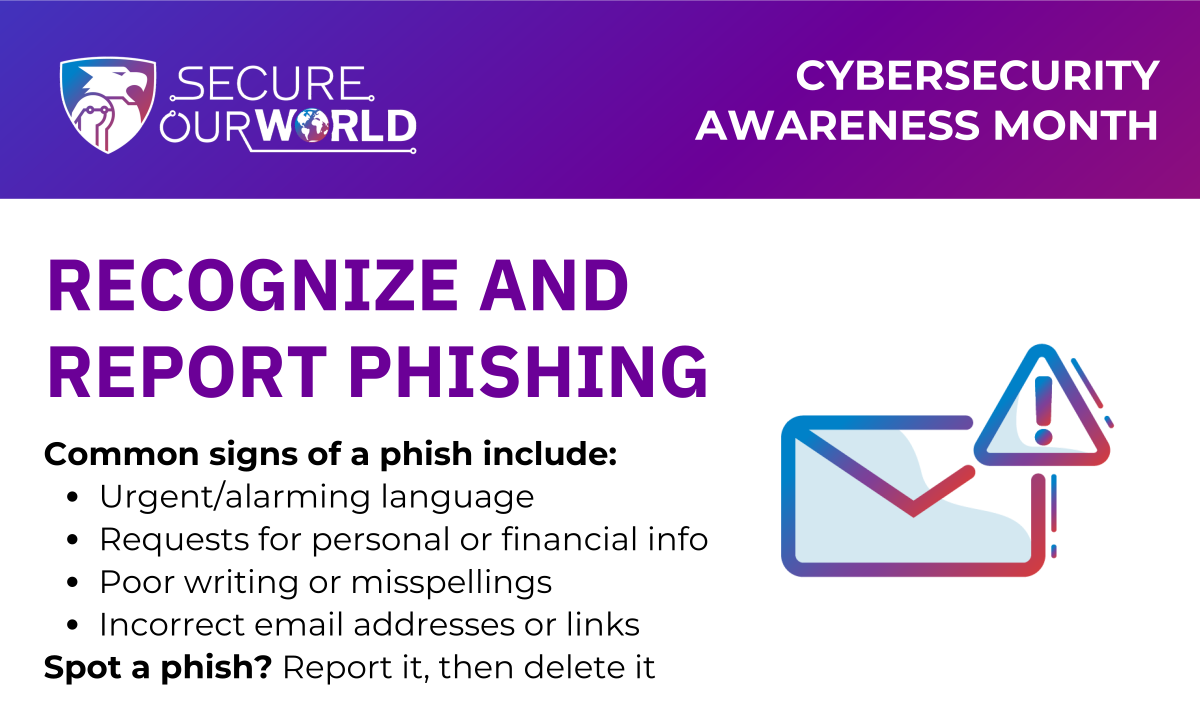
Phishing is when cybercriminals use fake emails, social media posts or direct messages with the goal of luring you to click on a bad link or download a malicious attachment. If you click on a phishing link or file, you can hand over your personal information to the criminals. A phishing scheme can also install malware onto your device.
There's no need to fear your inbox, though. Fortunately, it’s easy to avoid a scam email, but only once you know what to look for. With some knowledge, you can outsmart the phishers every day.
Spot it so you don’t click it.
The signs can be subtle, but once you recognize a phishing attempt you can avoid falling for it. Before clicking any links or attachments, take a few seconds to ensure the email looks legitimate. Here are some quick tips on how to spot a phishing email:
- Does it contain an offer that’s too good to be true?
- Does it include language that is urgent, alarming, or threatening?
- Is it poorly written with misspellings and bad grammar?
- Is the greeting ambiguous or generic?
- Does it include requests to send personal information?
- Does it stress an urgency to click on a hyperlink or attached file?
- Is it a strange or abrupt business request?
- Does the sender’s e-mail address match the company it’s coming from? Look closely for little misspellings like pavpal.com or anazon.com.
Uh oh! I see a phishing email. What do I do?
Don’t worry, you’ve already done the hard part, which is recognizing that an email is fake and part of a criminal’s phishing expedition.
If you’re at the office and the email came to your work email address, report it to your IT department promptly.
If the email came to your personal email address, don’t do what it says. Do not click on any links – even the unsubscribe link – or reply back to the email. Just use that delete button. Remember, DON’T CLICK ON LINKS, JUST DELETE.
You can also mark the email as "Junk" or "Spam", and you can even block the sending address from your email program. Here’s how to…
- Block a sender on Outlook.
- Block a sender on Gmail.
- Block a sender on Mac Mail.
- Block a sender on Yahoo Mail.